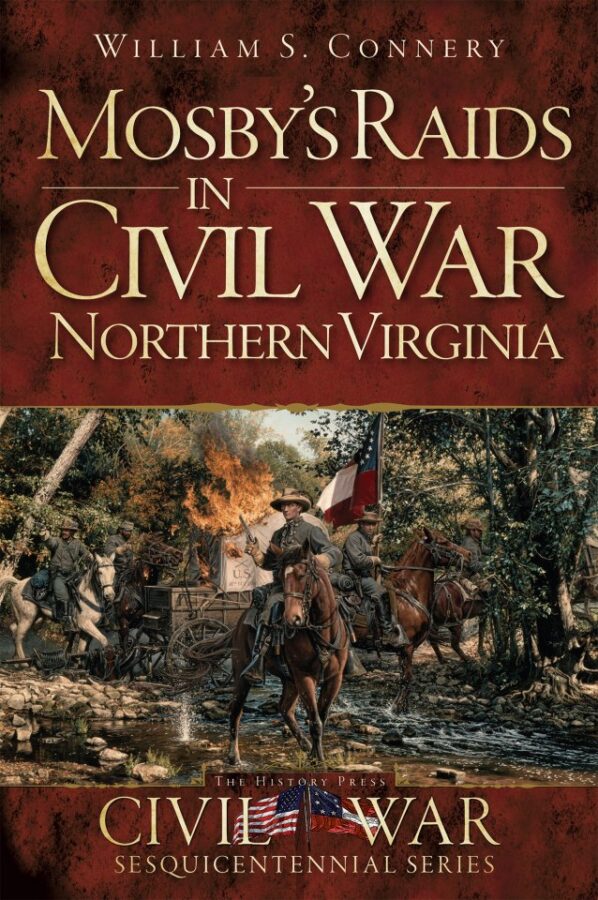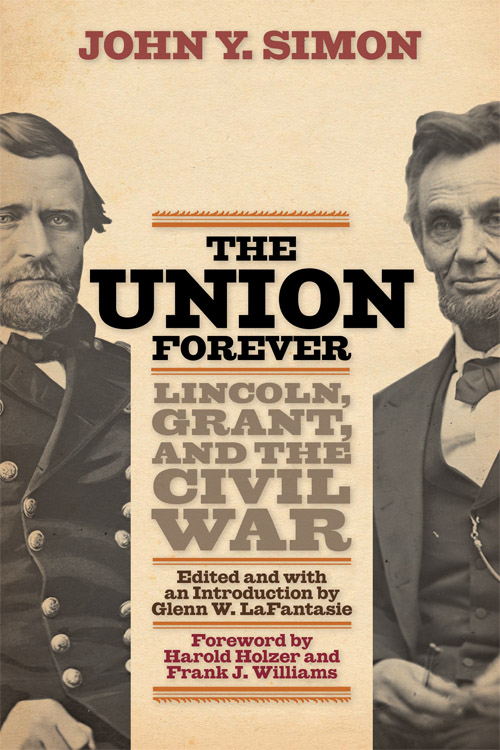Morgan’s Great Raid: The Remarkable Expedition from Kentucky to Ohio by David L. Mowery. The History Press, 2013. Paper, ISBN: 1690494369. $19.99.
Mosby’s Raids in Civil War Northern Virginia by William S. Connery. The History Press, 2013. Paper, ISBN: 1609498933. $19.99.
 Civil War border and irregular military studies have been trending lately within the academy and its presses. David L. Mowery’s Morgan’s Great Raid: The Remarkable Expedition from Kentucky to Ohio and William S. Connery’s Mosby’s Raids in Civil War Northern Virginia suggest that the nexus of such topics is also spilling over into popular history. Published as part of a Civil War sesquicentennial series by The History Press (cover art by Mort Kunstler and John Paul Strain, respectively, assures their popular nature), Mowery and Connery’s books represent the measured integration of border and irregular military topics into popular works, as well as a continued interest in old-fashioned battles and leaders military history and popular biography.
Civil War border and irregular military studies have been trending lately within the academy and its presses. David L. Mowery’s Morgan’s Great Raid: The Remarkable Expedition from Kentucky to Ohio and William S. Connery’s Mosby’s Raids in Civil War Northern Virginia suggest that the nexus of such topics is also spilling over into popular history. Published as part of a Civil War sesquicentennial series by The History Press (cover art by Mort Kunstler and John Paul Strain, respectively, assures their popular nature), Mowery and Connery’s books represent the measured integration of border and irregular military topics into popular works, as well as a continued interest in old-fashioned battles and leaders military history and popular biography.
Morgan’s Great Raid is a narrative campaign study, with particular emphasis on Kentuckian and Confederate brigadier general John Hunt Morgan. In July 1863, Morgan led nearly 2500 men and a battery of artillery on a one-thousand mile raid from Burkesville, Kentucky, to West Point, Ohio. The aim of the operation was to divert Union soldiers and resources away from the Union penetration into eastern (Ambrose Burnside) and south-central (William Rosecrans) Tennessee and toward Braxton Bragg’s Confederate forces. Mowery outlines in highly readable detail the various operational maneuvers of Morgan’s Raid, enhanced by dozens of maps and illustrations. The author also offers biographical information on Morgan’s lieutenants and adversaries, as well as chain of command data. This is a useful and accessible little book.
Aside from its expert economy (150 pages), the most impressive single element of Morgan’s Great Raid is perhaps its numerous maps, both covering the raid’s operational scope and detailing nearly all of its many battles and skirmishes. Modern software enables historians to subvert publishing costs by creating their own maps, and Mowery, who has been involved with the creation of Ohio’s John Hunt Morgan Heritage Trail, has generated twenty-five such illustrations of varying scale and feature. They are impressive in both style and source material. Overlooked Civil War battles such as Corydon and Buffington Island receive their due here, and Mowery is correct in calling his campaign maps a “unique aspect of this publication” (13). Indeed, these maps will justify the book’s purchase for many readers.
Mowery’s boldest interpretive assertions concern the operational and logistical novelty of Morgan’s invasion. Citing Morgan as a military precursor to 20th century “lightening war” pioneers Heinz Guderian and George S. Patton, Mowery deems Morgan’s use of telegraph, style of swift and penetrating infantry, and artillery movement “revolutionary” and “on the list of groundbreaking military achievements in world history” (12).While Mowery acknowledges that Morgan deliberately disobeyed orders and that his raid led to the destruction of one of the Confederacy’s finest cavalry units (only around 500 of Morgan’s men made it back to Confederate lines), he does argue for its strategic significance and considerable impact on American military doctrine.
Even though Morgan’s style of warfare was undoubtedly more ad hoc than West Point-sanctioned, this reviewer doubts that the links between Morgan’s Raid and the Nazi Blitzkrieg or Operation Iraqi Freedom, or between Morgan’s raiders and today’s Delta Force or SEALs, are as linear as Mowery suggests. (Military historians have examined the strategic use of modern military raids as an evolution dating back to the Hundred Year’s War.) Given the “hard war” approach of Union colonel Benjamin Grierson’s raid in Mississippi that spring, Morgan’s Raid may not have even been the most influential cavalry raid of 1863. Although, in a claim more asserted than proved, Mowery insists that the maneuver delayed Union general Ambrose Burnside’s incursion into East Tennessee and prolonged the war in the Western Theater (a debatable claim), the strategic value of Morgan’s Raid receives limited analysis (163-64).
Yet even as Mowery asserts the singularity of Morgan’s Raid, he calls the operation “a microcosm of the Civil War” (13). He argues that all the characteristic elements of the Civil War (or any war, really) were present, thus making Morgan’s Raid simultaneously exceptional and universal. Although claims about representation are always problematic, and the author almost certainly overstates his case for Morgan’s tactical innovation, the analogies Mowery raises are thought provoking nevertheless, if not controversial. Mowery would be on firmer ground making a claim for the topic’s viability based on the illustrations and concise accessibility of his volume.
More a traditional biography than a campaign history, Mosby’s Raiders spans the entire life of one of the Civil War era’s most charismatic figures. A Virginia lawyer of Tidewater lineage, Mosby, fearing a protracted border war, initially opposed secession, but remained loyal to his home state when Virginia left the Union. Mosby, who had no formal military training, became a scout under Confederate cavalryman J. E. B. Stuart, and Mosby applied Stuart’s methods as he rose from private to colonel and independent commander of his own unit under the Partisan Ranger Act of 1862. Influenced at an early age by the romantic tales of Francis Marion—the “Swamp Fox” of the American Revolution—Mosby perfected “hit and run” tactics and asymmetrical operations. He gained national attention as the “Gray Ghost” by capturing Union general Edwin Stoughton and, like Morgan’s Raid, Mosby’s 43rd Battalion Virginia Cavalry (also known as Mosby’s Raiders or Mosby’s Rangers), spent much of the war tying down federal units in Northern Virginia that could have been employed elsewhere.
Coverage of Mosby’s enthralling military operations constitutes only part of the book. The final and perhaps more interesting third of Connery’s work addresses Mosby’s postwar life. Here we get a taste of the Mosby historian David W. Blight reckons as “the most intriguing, if mercurial, dissenter to the Lost Cause.” Indeed, Mosby gradually became a “scalawag” after the war, campaigning for Republican president Ulysses S. Grant in Virginia, and endorsing the political equality of the races. He also served as his U.S. consul to Hong Kong under Republican Rutherford B. Hayes, after which he became an advocate of civil service reform. “Hell,” Mosby proclaimed, “is being a Republican in Virginia” (125). He slighted the Lost Cause interpretation of the war (a theme that concerns Connery far less than Blight), refusing to attend the unveiling of the Robert E. Lee statue in Richmond’s Monument Avenue in 1890. Even so, white Southerners continued to commemorate the “Gray Ghost” in stone and song, and Theodore Roosevelt, Winston Churchill, and George S. Patton cited Mosby as a major influence going into the twentieth-century.
Despite its engrossing protagonist, ample illustrations, and slim (147 pages) readability, Mosby’s Raids proves less satisfying than Morgan’s Great Raid in that its analysis is even more limited (and it does not boast the novelty of Mowery’s maps). Although Connery claims “Southerners eventually overlooked his Republicanism,” the author offers no speculation as to why Mosby’s reputation among Southern whites reversed itself around 1890 (137). Moreover, Connery’s assertion that Mosby is “still relevant today” and “near the top of the Confederate pantheon” is substantiated by a laundry list of Mosby in popular Confederate art and collectibles, rather than a thoughtful exploration of Mosby’s place within United States military canon, Neo-Confederate culture and the Lost Cause, or among contemporary historians (137-139). (Readers interested in such themes should look to Paul Ashdown and Edward Caudill’s The Mosby Myth: A Confederate Hero in Life and Legend [2002].) One also wishes Connery had devoted more analysis to Mosby’s impact on broader Confederate strategy
Furthermore, Mosby, like Morgan, was born into a prominent Southern family. Although Mowery mentions “honor” in reference to Morgan’s upbringing, this reviewer wishes both authors had delved deeper into how social rank, class aspiration, and status influenced these Southern “cavaliers” (21). Connery references Mosby’s “need for conflict” and “emotional satisfaction” achieved through independent, irregular warfare (35). The emphasis on attire and the intense desire of both men to act independently (and with a decided gusto) was surely rooted in Southern understandings of social hierarchy. Were cavalier culture and a libertine military spirit prominent in the Border South because that was where such values were most threatened by proximity to Yankee industry and Puritan restraint? Those interested in such questions must look elsewhere.
Overall, the workmanlike efforts of Mowery and Connery should find permanent places in the libraries of their respective subjects. Although neither work is footnoted, thus limiting their scholarly value, both Morgan’s Great Raid and Mosby’s Raids are solid introductions to an important and captivating Civil War topic. The latter, despite its analytical weaknesses, provides more concision than James A. Ramage’s The Gray Ghost: The Life of John Singleton Mosby (1999). The former, meanwhile, offers an updated take on Dee Brown’s The Bold Cavaliers: Morgan’s Second Kentucky Cavalry Raiders (1959) and a more succinct alternative to Ramage’s Rebel Raider: The Life of General John H. Morgan (1995). Both are worthy additions to the existing literature on these fascinating border raiders.
Matthew E. Stanley received his Ph.D. in American history at the University of Cincinnati in 2013. His dissertation, entitled, “‘Between Two Fires:’ War and Reunion in Middle America, 1860-1899,” examines regional identity and sectional discord and reconciliation in the Ohio River Valley.
